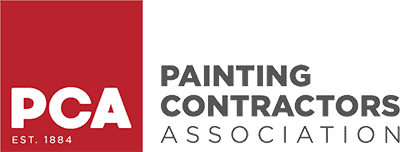When tackling interior painting repairs, matching the right color can be as crucial as finding a skilled painter. Interior painters know this: the secret to invisible repairs lies in perfect color matching.
In our last blog post, we discussed 10 simple steps you can take to color match your interior spaces. This post dives into practical tips for getting your colors just right, ensuring those repairs blend seamlessly with your existing walls.
By reading this blog post, you’ll unlock the secrets to flawlessly matching paint colors for interior painting repairs, ensuring your painting projects look professional and seamless. You’ll gain valuable insights into color theory, the impact of lighting on paint colors, and practical steps for testing paint samples in your home.
Moreover, this guide offers expert tips on when to opt for custom mixing and how to leverage digital tools for color matching. Whether you’re a seasoned DIY enthusiast or tackling your first repair, this post empowers you with the knowledge to achieve invisible repairs, enhancing the beauty and cohesion of your living spaces.
Color Matching for Interior Painting Repairs

Understanding Color Theory
Before you dive into your painting project, taking a moment to brush up on color theory can be the difference between harmonious interiors and mismatched walls that catch the eye for all the wrong reasons. Color is more complex than its surface shade; it involves understanding hue, saturation, and brightness. Hue refers to the color itself, saturation to the intensity of the color, and brightness to how light or dark the color appears.
But there’s more – the undertones of a color, those subtle notes that can lean cool or warm, play a significant role in how paint looks once applied. Additionally, the way natural and artificial light interacts with your paint can alter its appearance throughout the day.
This knowledge is not just useful but essential, as it influences how well your selected paint integrates with the existing palette of your space. Armed with this understanding, you’re better equipped to make choices that ensure your interior painting repairs enhance your home’s aesthetic, seamlessly blending new with old.
The Importance of Light
Lighting significantly influences the appearance of paint colors on your walls, a factor that cannot be overlooked when aiming for a perfect match in your interior painting repairs. The type of light under which you view your paint can dramatically change its appearance.
Natural daylight tends to reveal the most accurate color, showcasing the paint in its purest form. In contrast, incandescent bulbs can cast a warm glow, enriching warm tones and making cooler tones appear muted.
Fluorescent lights, on the other hand, have the opposite effect by enhancing cool tones and dimming warm ones. This interaction between light and paint color calls for careful observation of how various lighting conditions in your home affect your chosen paint.
Observing the color at different times of the day, under different lighting conditions, is essential. This diligence ensures that you select a color that remains consistent and harmonious in your space, regardless of the lighting, thus achieving a seamless and professional-quality finish in your painting project.
Sample Patches: A Must
Testing with sample patches is an essential step you simply can’t skip. Start by painting a small, inconspicuous area of your wall with the new color. Watch how this spot behaves over several days, observing it under various lighting conditions—morning sunlight, afternoon shade, and artificial light at night.
This method allows you to see firsthand how well the new paint matches your existing wall color in real-life situations, ensuring that your repair efforts blend seamlessly and remain undetectable. This careful observation ensures that the final result is as close to the original as possible, making your repair work truly invisible.
Techniques for Perfect Matching
1. Use the Original Paint: Ideally, using the leftover original paint ensures the most accurate match for interior painting repairs. This method guarantees consistency across your walls.
2. Custom Mixing: When original paint isn’t an option, custom mixing becomes essential. Take a sample of your wall color to a local paint store, where experts can create a matching tint just for you. This process ensures that the new paint closely aligns with your wall’s existing color.
3. Digital Tools: In today’s tech-savvy world, digital tools and applications offer a convenient way to match colors. By analyzing a photo of your wall, these innovative solutions suggest similar paint colors.
Below are two digital tools you can use to visualize colors:
While they provide a close match, it’s often best to have professionals adjust the final mix for perfection.
Professional Help: When to Call
While DIY can be rewarding, some situations call for professional interior painters. Complex textures, large areas, or simply the desire for a guaranteed match might mean it’s time to call in the experts. Professionals have the tools, techniques, and experience to ensure your interior painting repairs are indistinguishable from the original.
In these instances, Brushes Over Broome LLC stands out as your go-to choice. Our dedicated team of skilled painters brings a wealth of experience and a keen eye for detail to every project, ensuring that your spaces not only meet but exceed your expectations.
With Brushes Over Broome LLC, you’re not just getting a paint job; you’re investing in peace of mind, knowing that your project is in the hands of certified experts who care deeply about the quality of their work.
If you’re looking for results that blend seamlessly with your existing décor and stand the test of time, we invite you to reach out to us. Call us at 607-524-5590 for a free consultation.


